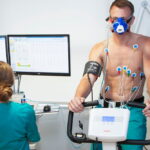Facelift surgery, which is also known as rhytidectomy, is a cosmetic procedure designed to address signs of aging by tightening the tissues and skin of the face and neck. While it’s often associated with achieving a more youthful appearance, the science behind facelift surgery goes deeper, involving anatomical changes, tissue manipulation, and understanding the aging process itself.
Understanding Facial Aging
The aging process affects the face in various ways. Over time, the skin loses elasticity, facial fat diminishes or shifts, and muscles weaken. These changes lead to wrinkles, sagging skin, and loss of definition in the neck and jaw. Factors such as genetics, sun exposure, lifestyle choices, and skin care practices influence the rate and extent of facial aging.
The Facelift Procedure
During a facelift procedure, a surgeon like Iteld Plastic Surgery carefully lifts and repositions the skin and underlying tissues to create a smoother, firmer, and more youthful appearance. Here’s a rundown of the key steps that are involved with it:
1- Anesthesia: A facelift typically starts with the administration of anesthesia to ensure the patient’s comfort. Depending on the extent of the surgery, options include local anesthesia with sedation or general anesthesia.
2- Incisions: The surgeon makes strategic incisions along the hairline and around the ears to lessen the amount of scarring that’s visible. These incisions provide access to the underlying tissues.
3- Tissue Manipulation: The surgeon lifts and repositions the facial tissues, including muscles and fat pads, to restore a more youthful contour. Excess skin is trimmed away as required.
4- Closure: Once the desired changes are made, the incisions are carefully closed with sutures or surgical staples.
How The Results Work
Facelift surgery produces dramatic results by addressing multiple aspects of facial aging:
– Skin Tightening: By removing excess skin and tightening the remaining skin, the procedure reduces wrinkles and sagging, resulting in a smoother and firmer appearance.
– Muscle Repositioning: As facial muscles weaken with age, they contribute to sagging and drooping. During a facelift, muscles may be repositioned or tightened to restore a more youthful contour.
– Fat Redistribution: Over time, facial fat can shift or diminish, leading to hollowed cheeks and sunken areas. A facelift may involve redistributing or adding fat to restore volume and fullness.
– Structural Support: The underlying facial structures, such as the SMAS (superficial musculoaponeurotic system), provide support and shape to the face. A facelift involves lifting and repositioning these structures to create a more defined jaw and neck.
– Stimulation of Collagen: The trauma caused by surgery triggers the body’s natural healing response, which includes the production of collagen—a protein that helps to keep the skin firm and elastic. This can further improve the long-term results of the procedure.
Advancements in Facelift Techniques
Over the years, advancements in surgical techniques have made facelift procedures safer, more effective, and less invasive. Minimally invasive techniques, such as the mini facelift or endoscopic facelift, involve smaller incisions and shorter recovery times while still achieving significant improvements in facial appearance.
Risks and Recovery
Like any surgical procedure, facelift surgery carries risks, including infection, bleeding, scarring, and nerve damage. The good news is that these risks can be reduced by choosing a qualified and experienced surgeon and following post-operative care instructions diligently.
Recovery from a facelift typically involves swelling, bruising, and discomfort, which gradually subside over several weeks. Patients are advised to avoid strenuous activities and follow their surgeon’s guidance to optimize healing and achieve the best results.
Did you find this helpful? Check out our other helpful articles on our website.
Read Also
- How to Find a 5-Star Dentist Near YouChoosing a dentist is more than just finding someone who can clean your teeth. It’s about selecting a trusted partner in your long-term oral health. A 5-star dentist not only provides excellent clinical care but also delivers a positive patient experience, from the moment you walk in until the moment you leave. Whether you’re new… Read more: How to Find a 5-Star Dentist Near You
- Your Easy-Peasy Guide to Brewing Amazing MatchaHey there! So, you’ve heard all the buzz about matcha – that vibrant green powder that’s not just pretty but packed with good stuff? It can seem a little fancy and intimidating at first, but trust me, making a delicious cup at home is simpler than you think. Forget complicated ceremonies for now; let’s just… Read more: Your Easy-Peasy Guide to Brewing Amazing Matcha
- Embracing Holistic Wellness: Insights from a Lansing, MI Health CenterReframing Health: Moving Beyond Symptom Management Treating only symptoms often offers quick relief, yet long-term results stay out of reach. When care zeroes in on isolated complaints, the bigger picture, such as stress, behavior, or lifestyle, often gets missed. Research shows that whole-person care, which looks at physical, emotional, and environmental factors, yields better outcomes… Read more: Embracing Holistic Wellness: Insights from a Lansing, MI Health Center
- VO₂ Max Testing Explained: What It Is & Why It Matters for Your HealthVO₂ max sounds like a term reserved for elite athletes, but it’s among the most accurate measures of your lifetime and general condition. Moreover, it goes beyond performance. Monitoring your VO₂ max will help you to ascertain your body’s capacity to control stress, its oxygen consumption efficiency, and your internal ageing process. If you have… Read more: VO₂ Max Testing Explained: What It Is & Why It Matters for Your Health
- So, what exactly is matcha?Think of matcha as green tea turned up to eleven! Instead of steeping leaves and tossing them out, matcha is made by grinding whole green tea leaves into this super-fine, vibrant green powder. You whisk it right into hot water (or milk!), meaning you’re drinking the entire leaf. That’s why folks say you get way… Read more: So, what exactly is matcha?
- How to Tell When It’s Time for Professional Senior Care SupportCaring for an aging loved one is a journey filled with love, patience, and difficult decisions. One of the toughest choices families face is knowing when it’s time to seek extra help. In this article, trusted Los Angeles caregivers for seniors explore the signs that it might be time to bring in professional support, not… Read more: How to Tell When It’s Time for Professional Senior Care Support
- Reporting a Work Injury: What Deadlines You Need to KnowAfter a workplace injury, time isn’t always on your side. Many employees aren’t aware that there are strict deadlines for reporting a work-related injury, and missing that window can put your entire claim at risk. Whether your injury was sudden or developed gradually over time, it’s essential to act quickly and follow the proper steps.… Read more: Reporting a Work Injury: What Deadlines You Need to Know
- How All-on-4 Can Transform Your Smile (and Confidence)If you’ve been living with missing teeth, uncomfortable dentures, or declining oral health, you know how much it can affect your self-esteem. All-on-4 dental implants offer more than just a full set of teeth — they offer a renewed sense of confidence and quality of life. With a streamlined treatment process and reliable, long-term results,… Read more: How All-on-4 Can Transform Your Smile (and Confidence)









